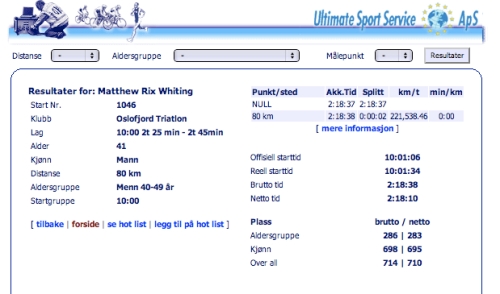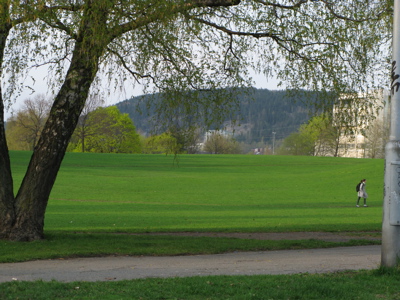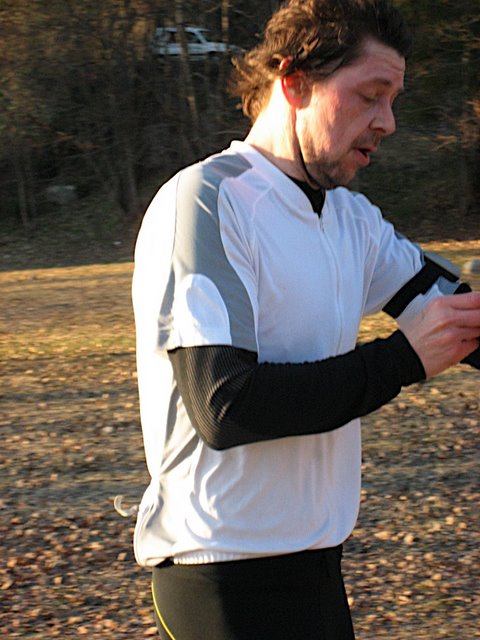I have said for years that I am not interested in running a marathon. I run often, I happily run 20km, and have been known to run 30km, but 42km is too far. And then, in the last two or three years, I began to get Nordmarka Skogsmaraton on my mind. A hilly marathon in the place I like to run and cycle best, Oslo’s wonderful forest. And so, in the end, I just had to do it.
It had been raining torrentially for much of the morning before the start of the race at 11am, and it was very difficult to decide what to wear. I ended up in shorts and with my old Nike running shirt under my running singlet, so I had two thin layers on my upper body.
I lined up towards the rear of the field of about 570, and off we went, I started my watch as I crossed the start line and as space opened up I began to jog. Everything that I have read about marathons has led me to have a huge respect for the distance, so I was very happy to take it easy. They say that a marathon really starts at 30km and that the last 10km are really tough both physically and mentally, so I had every intention of still being in decent shape after 30km so that I had something left for the last 10km. I have run 10km with sore muscles and pain in my legs before, and it’s no fun. Today, I wanted to enjoy running in the forest; I didn’t want a world of pain.
In the first km or two I had a chat with a fellow triathlete who recognised me from previous races. I said goodbye to him and jogged up through the field. I then came across two guys running together, who were discussing their pace. I asked them what their target was. They had run the forest marathon at least a couple of times before, and were quite confident of a time of about 3:45. They were using a gps watch to measure their pace. My multisport watch is out of commission at the moment, so I was running purely on instinct with only a basic stopwatch on my wrist. I told my new friends that their target suited me perfectly, and, if they didn’t mind, I would run with them. And that’s how I ran about the first 12km of the race, and a couple of the race’s notorious hard hills.

I felt great. I was jogging lightly, chatting, and enjoying Nordmarka forest, one of my favourite places to be. We were gradually making our way up through the field too, so I thought our pace must be decent. There are a few hills in the first 5km, and I noted already that some runners were breathing a little hard. My own breathing was light and my body was functioning fine. After 10km the first big hill came, and I jogged up it nice and easily. At the top my new friends had fallen a little behind, and I decided to push on a little faster.
So, I increased my pace a little, but still loose and easy, and I started to run past people. The next few kilometres were hilly before the long steep downhill of “Døderen” and then followed a gentle rise towards the turning point at around 19km. The three km before and after the turning point is the only part of the course you get to pass others running in the opposite direction, first those ahead and then those behind you. There, I could see the pace of the runners at the front, and they were fast and running hard. I sped up a little more. By now I had run past many fellow runners, and I continued to do so. I reached the turning point and continued to run past people.
By now, several times, I had caught people who were ahead and thought “this is a pace that suits me, I’ll stay with them”, only to run off ahead within a minute or two. 21km, the half way point, came up and my legs still felt fresh and I was still running comfortably, well within my capacity. I had now run a hilly half marathon, not breathed hard once, my legs felt great, and my watch said 1:46. For the first time I thought that I might come in under 3:30. I was smiling.
But there was still 10km to run before the marathon really starts at 30km, so I decided that I would continue to run nice and easy to 32km, and then see if I had anything left for the last 10km. And that’s how the next 10km were, past Kikutstua and up to Kobberhaughytta. My fellow runners were getting quite stretched out now, so every time I ran past a group of two or three there was a gap of a couple of hundred metres up to the next group, but to my surprise the gap was bridged quite quickly and I ran passed them, and then began to look at the next group ahead.
The weather: We had been lucky at the beginning of the race. The sun came out a few minutes before the race started. Some runners ran for the changing rooms to shed jackets etc. And so the race started in fine weather. But the threat of more rain hung over us and it was after 20km that the heavens opened. It was cool in the forest before the rain, perfect for running, but with the rain my legs began to get cold and I could feel the muscles on the top of my thighs stiffening. I began to plead for the rain to stop, since I thought that if anything was going to ruin my good run it was the cold rain on my legs. It rained, it stopped, it rained again, it stopped. But my legs weren’t being affected, and I ran on.
At Kobberhaughytta, just short of 30km, we left the gravel forest roads for the only time in the race and hit the hiking trail for 3 or 4 kilometres. There was not much over 10km to go and I was beginning to be confident of a time that I hadn’t hoped to achieve at the beginning of the race. I was now towards the front end of the field, but the trail had already become a muddy slimey mess. Mud, rocks, roots, water and more mud, and I was in with a chance of 3:30 and wanted to push, but the trail was treacherous. Luckily, I had come up behind 4 runners who set a good pace on the trail, and for the first time in the race I was making an effort to keep up. The trail took every ounce of concentration. One wrong step can bring you down on such a trail and can ruin the whole race.
The trail ended, and we were back on the gravel roads. I ran straight past the guys I had been following for 3km and I didn’t see any more of them after that. Some downhill followed and then the last major climb up to Ullevålseter. 35km were completed and my confidence was up and my legs were strong. I continued to pass a few more runners and noticed that a few had slowed right down. People that had started too fast must be feeling it by now. The last hill up to Ullevålseter is quite a long one, but my legs were still good and I took it at a steady pace reminding myself that I wanted speed for the last 5 or 6km to the finish once at the top.

I reached Ullevålseter and was still feeling good. My legs were beginning to feel tired, but I knew they had plenty left in them. I was then surprised that the course didn’t take the normal main route back to Sognsvann, as I had just assumed it would, but took the alternative route that first heads upwards on the ski trail towards Frognerseteren before turning off and heading sharply downhill towards Sognsvann, and the Norwegian School of Sports Science (NIH) where the finish line waited. This last little bit of uphill was quite steep and unexpected, and finally my legs and lungs threatened to force me to slow down. I focused, came over the top, and then I started my 5km charge for the finish line and 3:30.
For the last 5km I ran hard, and took it as I would a 5km road race – full focus, full effort, full speed and no more time for smiling, looking around and enjoying myself. I felt confident I was under 3:30, but I was taking no chances. I couldn’t remember how many hundred metres I would still have to run after the 42km came up. 40km came up and I had 9:30 (I think) to make it to the line. I ran hard. Those last two kilometres began to hurt, but I was charging. The last stretch before I came down to Sognsvann seemed to take forever, but then there I was. I took the last turn, charge over the rise and into the grounds of NIH, the loud speaker blaring out. I sprinted for the line and passed the 4th placed female with metres to go, ran over the finish line and stopped my stopwatch. It said 3:29:30. Later, my official time was published at 3:29:58, to which I have only one response – 😀
Nutrition
I saw plenty of people eating gels or energy bars before the race, many with gels stuffed in their pockets and in belts, and eating gels whilst they ran. I had a good breakfast less than 3 hours before the race, and I wanted to carry nothing on the run. There were drink stations every 5km and food stations every 10km and I thought this would be enough for me. I drank half a cup of sports drink at 5, 15, 25 and 35km, and I ate a half banana and drank half a cup of water at 10, 20 and 30km. This was plenty, and apart from a few burps here and there I think I got the nutrition spot on.
Clothing
It wasn’t much over 10 degrees Centigrade in the forest, overcast, some breeze and the occasional cool shower. I wore my old Nike running tee under a Ron Hill vest, Ronhill shorts, Hilly socks and my new Brooks Ghost 4 shoes. I was concerned when my legs got too cold, but their performance wasn’t affected. Otherwise, I was mostly at a comfortable temperature, but did get a little cold once or twice in the rain in exposed areas where the wind gets up a little. The sock-shoe combination was perfect. My feet were perfectly comfortable for the whole race. The Brooks Ghosts provide a soft and comfy ride, but still fun, and I didn’t suffer even a single blister thanks to the Hilly twin skin socks. [Edit] I was also wearing my 2XU compression calf guards, which have been a revelation for me the last 18 months. Before I started running in these I used to get very stiff calfs on long runs, and my calfs would stay stiff for two days afterwards. Since starting to use them this problem has been totally absent. I notice that the winner of the race was wearing an identical pair see photo of winner Arild Christopherson
Closing thoughts
I am very happy indeed with my first marathon, as the preceding text indicates. I started the race as a relaxed social occasion, took the whole first half at an easy jog, and only really felt like I was in a foot race in the final 10km. In terms of my time it is 10 minutes quicker than I guessed I could run it, and yet I believe I could have run the first half of the race 5-10 minutes quicker without it having affected my performance for the second half (but who knows). Nordmarka skogsmaraton is a hilly marathon on forest roads (see profile), and many say that it takes 15 minutes longer to run than a normal marathon. I have every reason to be pleased.
The race itself is very well organised. Everything is simple and it works. The functionaries were enthusiastic, and all the food and drink stations were fully stocked up. Thank you for a great race.
The only negative thing I wish to note at all is that I saw a fellow competitor throwing away an empty gel tube in the forest, kilometres from the nearest drink station. That is not acceptable. The athlete was being supplied with gels by cyclists in United Bakeries livery during the race. I hope the litter was cleared up (I fear not), and I hope someone takes responsibility for this. Many competitions now penalise athletes for littering. Norway is a little behind the times regarding this matter, and I hope it catches up fast.



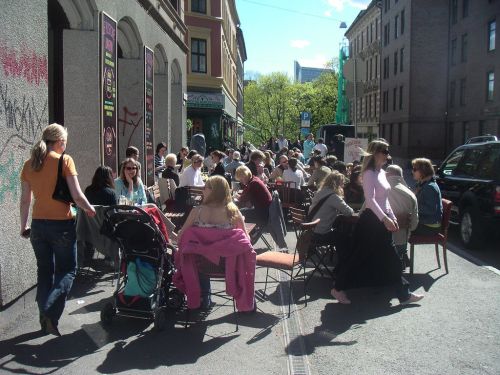
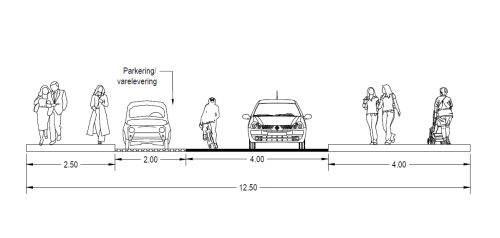



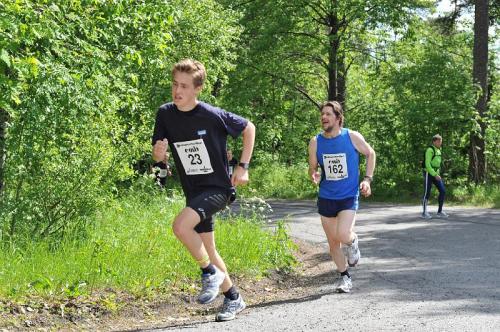
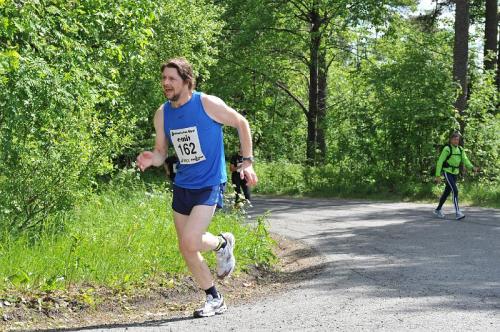
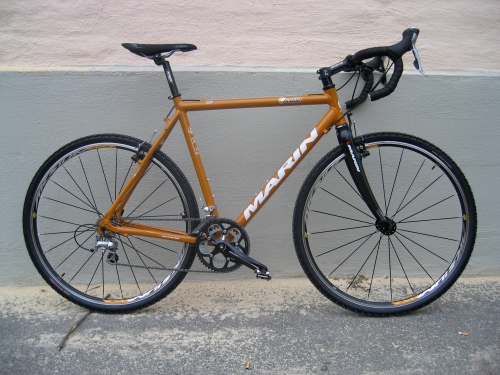
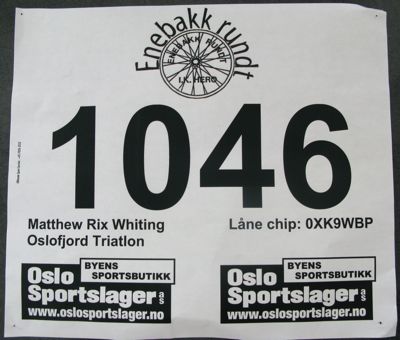 It’s May 1st and the date for Enebakk Rundt cycle race in the countryside around Oslo. Enebakk Rundt is one of the most popular road races in Norway, with a long history. Its popularity probably stems from the fact that it starts and finishes in the outer suburbs of Norways capital; that coming on May 1st it is one of the first spring races in the country; and that the course for the race is a fine quick course that goes through mostly rolling scenic countryside. This year Enebakk Rundt has seen a record number of entrants with 1400 registered to start the race.
It’s May 1st and the date for Enebakk Rundt cycle race in the countryside around Oslo. Enebakk Rundt is one of the most popular road races in Norway, with a long history. Its popularity probably stems from the fact that it starts and finishes in the outer suburbs of Norways capital; that coming on May 1st it is one of the first spring races in the country; and that the course for the race is a fine quick course that goes through mostly rolling scenic countryside. This year Enebakk Rundt has seen a record number of entrants with 1400 registered to start the race.